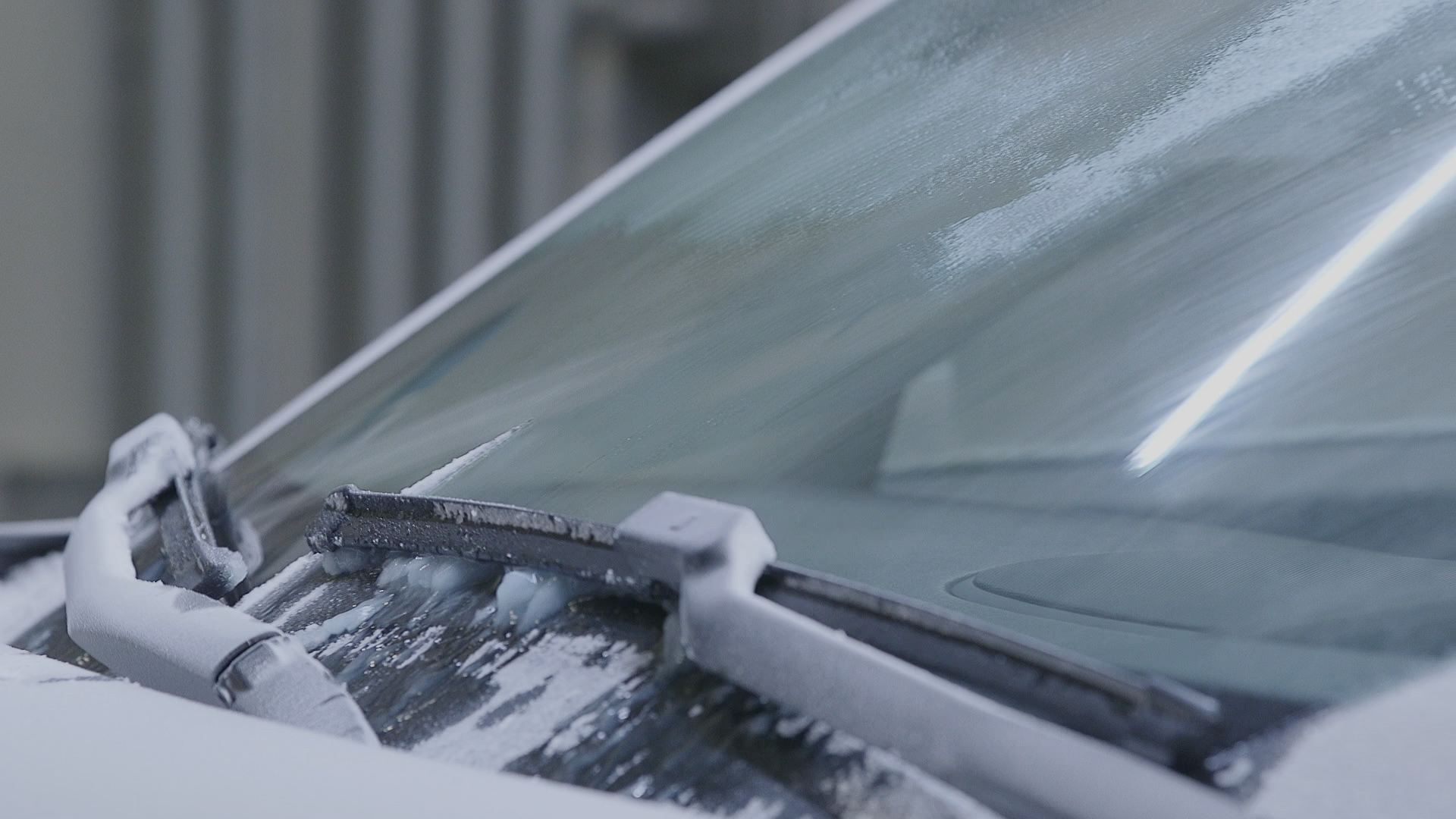

If you live somewhere cold and snowy and own a car, now is a great time to think about how your vehicle handles the nasty temperatures and elements. For example, you may want to consider winter tires: They rely on a rubber compound designed to stay softer, and help you grip the road better, when it’s chilly.
Then there are your wiper blades, which will drive you bonkers or even put you at risk if they’re not clearing the windshield effectively. Just like winter tires should be soft, a rubber wiper blade that stays pliable—and follows the shape of the windshield as it moves—is going to work better.
That’s part of the thinking behind the creatively designed wiper blades on the new Lincoln Aviator. The optional devices pack two useful pieces of tech in them that should make them more effective and make you think, “I wish I had those.”
First off, they’re heated. Each blade contains a strip of thin metal foil connected to a power source, explains Geoffrey Johnson, a wiper engineer at Lincoln. The metal element is resistive, meaning that it gets hot when electricity flows through it, and is attached just above the rubber to allow the heat to disperse. “It keeps the rubber soft, so it can conform to the shape of the glass,” Johnson says. “That drastically improves your wiping capability.”
The heater melts frost and snow that could otherwise build up, and can help de-ice the windshield in a matter of four minutes, according to Lincoln. For replacements, customers won’t have to swap out the whole wiper blade with heating strip: The rubber portions simply slide out and can be exchanged.
Lincoln’s made the entire system automatic, so that the heating elements cycle on and off at different time lengths depending on how cold it is outside. When it’s between 41 and 23 degrees outside, for instance, the warmers are on for 20 seconds each minute. Between 23 and 5 degrees, they’re on 30 seconds at a time. When it’s -13 or colder, they’re on constantly.
The second feature that Lincoln added is the way the vehicle handles spraying the windshield wiper fluid. Typically, your car squirts blue arcs all over the place every time you pull that handle, usually from nozzles tucked into your hood. But in the 2020 Aviator, the system forces the fluid out through 38 or 42 laser-cut holes (there’s four more on the driver’s side wiper) on the blades themselves, right onto the glass. This allows the vehicle to use 50 percent less liquid, according to Lincoln. (Lincoln isn’t alone: Mercedes has a heated windshield wiper system that also deploys the fluid through laser-cut holes in the blades.)
On a visual level, the squirt-from-the-blade configuration may have a strange effect. “It’s kinda weird because you don’t see any washer fluid, but you do see a clean windshield,” Johnson says.
“It really improves the customer’s vision and reaction time,” he notes, in part because you’re not dowsing the whole windscreen with liquid that temporarily obstructs your view.
Tech like this, regardless of its creature-comfort factor, is a reminder to keep your car properly maintained, especially in the winter. Chances are you aren’t driving a vehicle with a fancy self-heating windshield, so make sure your wipers and fluid are in good working order. Use winter tires (not all-season) when it’s cold, and check that your headlights are operable, too.
Related:
